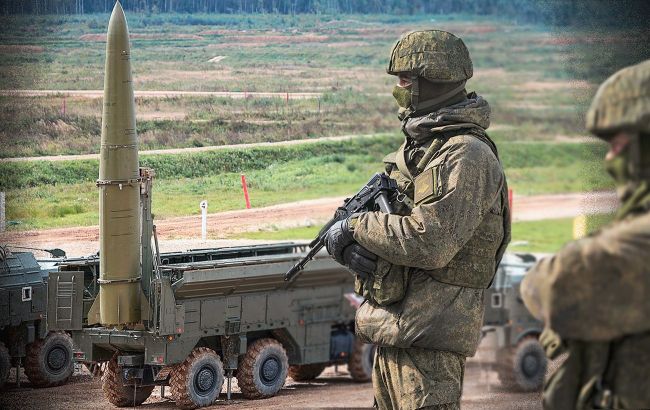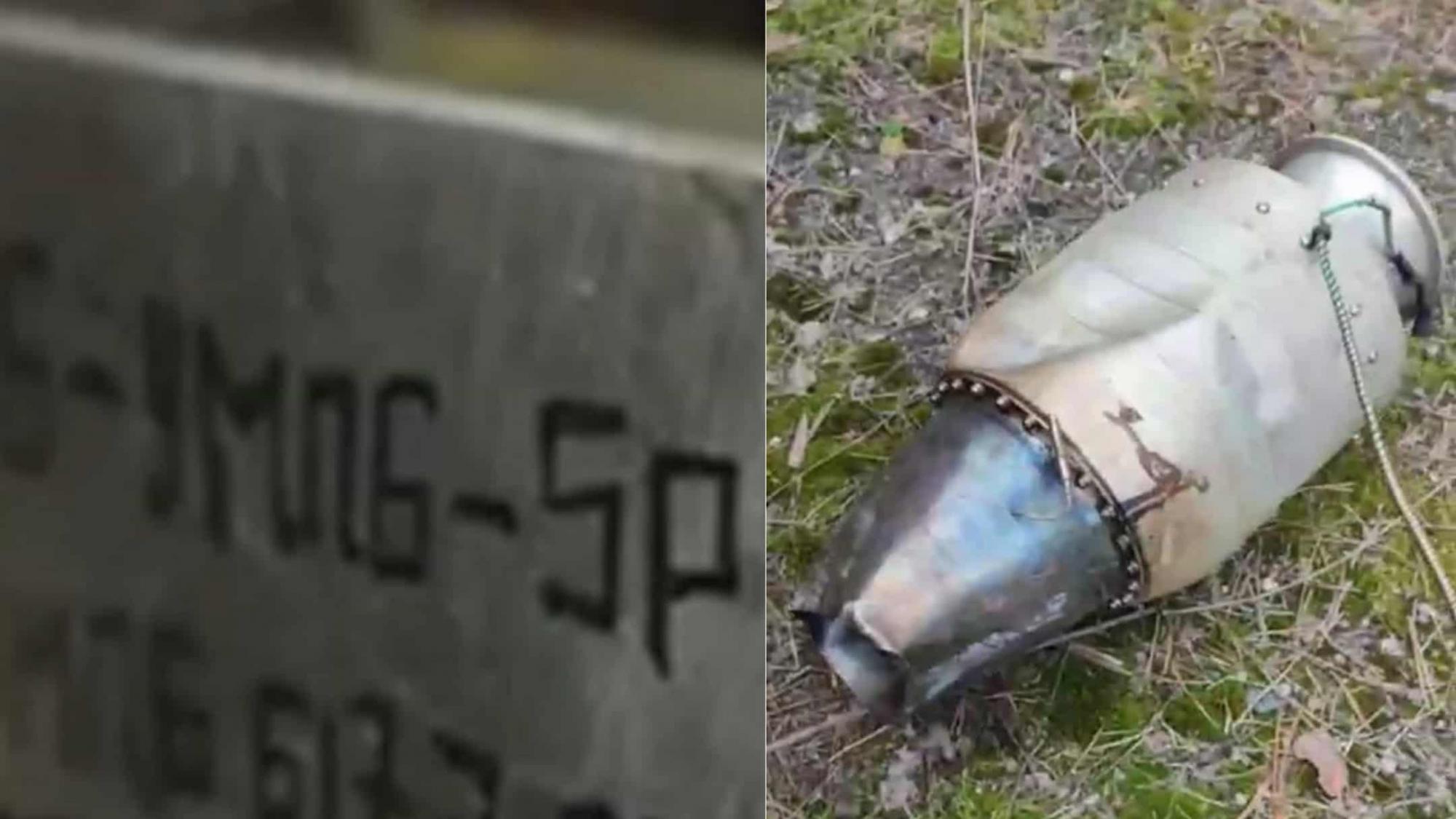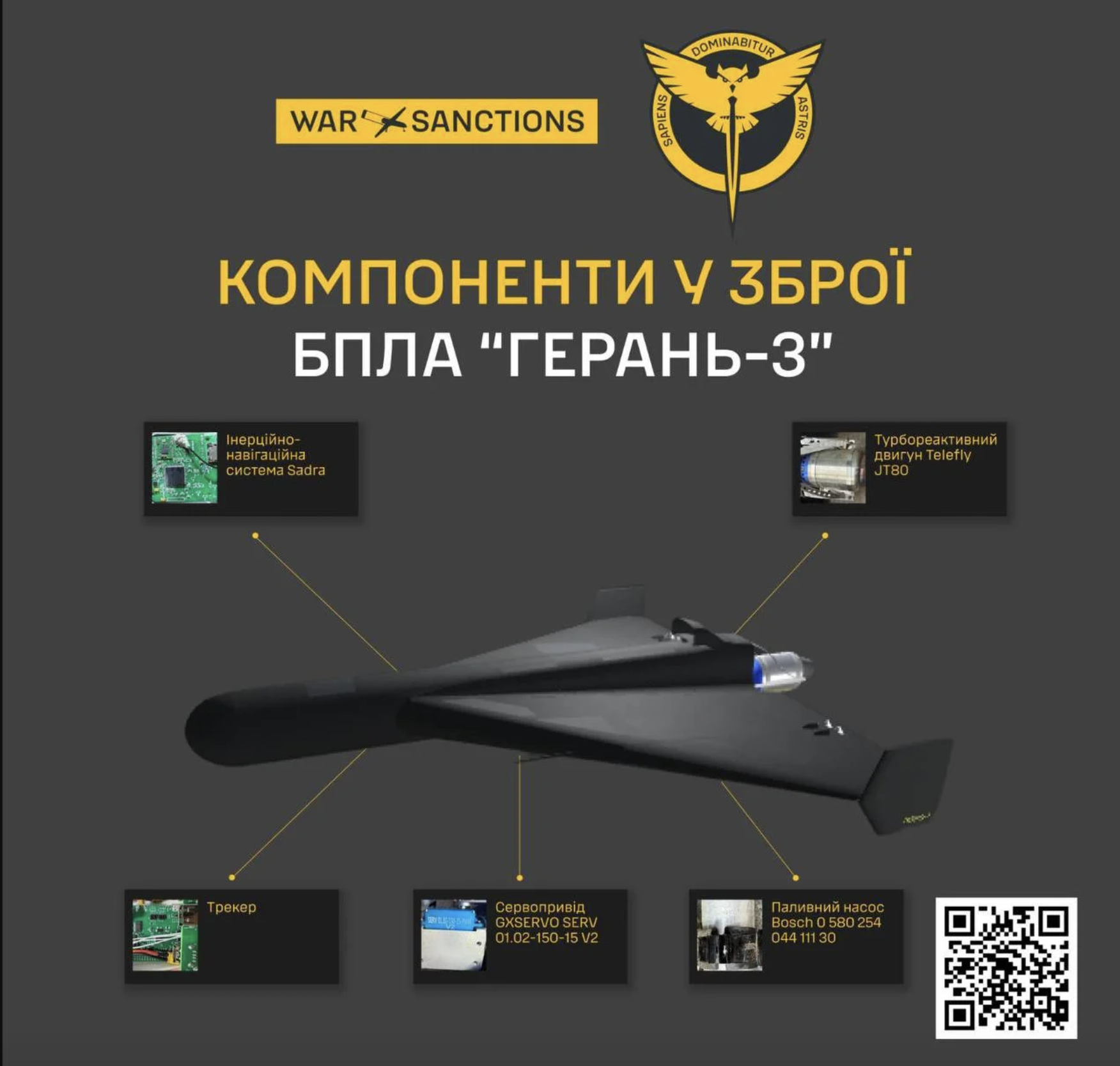Russia's deadly upgrade: Guided bombs, Iskander missiles, and drones refined for terrorizing Ukraine
 During the years of the full-scale invasion of Ukraine, Russia modernized its KABs, Iskanders, and UAVs (collage: RBC-Ukraine)
During the years of the full-scale invasion of Ukraine, Russia modernized its KABs, Iskanders, and UAVs (collage: RBC-Ukraine)
During the full-scale invasion of Ukraine, Russia is improving its missiles, bombs, and drones, which it is using to attack Ukraine. RBC-Ukraine analyzes what has changed and what threat they pose.
Key questions:
- How have Russian guided aerial bombs changed?
- How is Russia already reaching its rear areas — with the Grom-1E or the UMPB-5R?
- How widespread is this weaponry?
- What are Geran-3 and other jet-powered drones?
- Have Iskander-M ballistic missiles really changed, and how does Patriot counter them?
Russia is transforming its arsenal of terror against Ukrainian cities behind the front line. While in the first year of the large-scale invasion, these were mainly cruise and ballistic missiles in combination with Iranian drones, the range of these weapons has since been improved and expanded.
Now, along with Shahed or Geran-2 drones, Russia is also launching Geran-3 and upgraded Iskander missiles into our skies, as well as testing new guided aerial bombs (KABs) for attacks on Ukrainian cities. The goal is to overload Ukrainian air defense, cause as much damage as possible to critical and military infrastructure, and create additional psychological pressure on the population.
Aerial bombs evolution: What are new KABs
Russia began to increase the use of guided aerial bombs on the front lines as early as the end of 2023. They are based on Soviet high-explosive aerial bombs, such as the FAB-250 and FAB-500, which are equipped with a universal gliding and flight correction module (UMPK). They are usually launched from Su-34 fighter-bombers.
The UMPK is a module equipped with wings, a satellite, and inertial navigation, as well as electronic warfare countermeasures. It allows the range of these aerial bombs to be increased significantly, from 10 to 80 kilometers. Russia uses dozens of such KABs daily along the front line.
"During September and October, Russia developed and has now entered the final combat trial use of aerial bombs with new control modules. They predict that the range and combat radius of such bombs will be about 200 km," Major General Vadym Skibitskyi, deputy head of the Defense Intelligence of Ukraine (HUR), told RBC-Ukraine.
With the addition of a jet engine, the new KABs have become more like winged mini-missiles and have increased range – instead of 80 kilometers, as previously recorded. Due to the increased range of up to 200 kilometers, the carrier aircraft does not have to approach the Ukrainian air defense zone.
The first strikes with the new KABs have already been recorded, in particular, in Dnipro, Poltava, and Odesa regions — relatively rear areas of Ukraine. So far, there have been only isolated uses of the new jet bombs. However, according to HUR, Russia is already moving to mass production of this weapon.
"The use of such KABs is not widespread at the moment. Russia is testing them in combat conditions. They have been using them for more than a month now – such projects became known several years ago. The target has flight parameters similar to those of a cruise missile. Such bombs can be countered with both firepower and electronic warfare. The main thing is to have sufficient means to do so," Yurii Ihnat, head of communications for the Ukrainian Air Force Command, explains to RBC-Ukraine.
Various names for this bomb can be found in the information space. Sometimes they are called Grom-1E – this is another hybrid weapon that Russia has been using periodically against Ukraine since early 2023. But the recent attacks on Poltava and Odesa regions were most likely carried out with jet-powered KABs called UMPB-5R – bombs with jet engines.
 A fragment of a UMPB-5R aerial bomb (Photo: Serhii Flesh)
A fragment of a UMPB-5R aerial bomb (Photo: Serhii Flesh)
"Meanwhile, the Grom-1E is a hybrid of a bomb and a Kh-38 supersonic missile. The idea is that this missile will fly 40 kilometers, and then the bomb will continue its flight along its trajectory. In reality, if we consider the pragmatic interests of the Russians, it is more profitable for them to scale up the production of conventional guided bombs with various modifications," explains Ivan Kyrychevskyi, a serviceman of the 413th Regiment of the Special Forces Raid and an expert on armaments at Defense Express.
According to the interlocutor, the Russians once announced the invention of an allegedly universal ammunition – the UMPB D-30SN. However, they were unable to demonstrate their uniqueness and versatility in combat conditions. According to Kyrychevskyi, the UMPB-5R may be an attempt to develop this invention.
"The declared launch range of the Grom-1E is up to 110-120 kilometers. It is assumed that the UMPB-5R can reach up to 200 kilometers. But so far, it turns out that its deepest flight range is 130 kilometers, which we saw in the situation with the Poltava region, where this bomb did not reach 30 kilometers to Poltava itself," says Kyrychevsky.
One source in the Ukrainian Defense Forces explains that the Russians are currently working on increasing the range of these bombs, for example, by adding more fuel and reducing the amount of explosives. According to RBC-Ukraine, by the end of this year, the Russians want to produce about 250 units of Grom-1E and approximately 500 UMBP-5R. However, these volumes may be larger in the future.
Another difference between these two weapons is that while the Grom-1E can fly at supersonic speeds of over 1,150 km/h in the initial stage of flight, the UMBP-5R is believed to have subsonic flight speeds.
"And given that, according to the Ukrainian Air Force, 2 of the 3 such bombs were hit in the Odesa region, this means that the target is subsonic and can be dealt with. But to say that Russian jet-powered KABs will now start falling on Kyiv and we can't do anything about it — objectively speaking, that is not the case at the moment," Kyrychevskyi notes.
Jet drones: Development of Shaheds
Since 2024, the Russians have begun to use the same suicide drones with jet engines alongside piston drones of the Shahed type, the technology for which was completely copied from Iran. Such an engine, as in the case of KABs, adds speed and range to them. The first samples were identified in the spring of 2025 – these are Banderol and Dan-M. Later this summer, Ukraine recorded the Geran-3 (or Shahed-238) drones for the first time.
So far, Russia has conducted at least 2 Dan-M drone attacks. The results of the second attack are unknown, but during the first attack, 2 out of three were hit, and another fell into the Black Sea.
This drone has been in service with the Russian military since the 1990s and, before modification, was used as a target drone. The Dan-M can reach speeds of up to 750 km/h. There is no evidence of serial production of these drones. It can be assumed that they were used sporadically to overload Ukrainian air defense systems: due to their altitude and flight speed, they require the use of air defense systems with a longer range than, for example, anti-aircraft guns or portable complexes.
Unlike this type of drone, the Banderol drone missile has a slightly lower speed, between 500 and 650 km/h. It is equipped with an SW800 turbojet engine manufactured by the Chinese company Swiwin, the same as the UMBP-5R, Kyrychevsky notes. The downing of this drone has also been recorded in Ukrainian Air Force reports, but its use can still be considered isolated.
There is much more information about the Geran-3, which is manufactured in Yelabuga in the Russian republic of Tatarstan. Ultimately, Moscow borrowed this drone project, like all other suicide drones, from Iran. Due to the installation of a turbojet engine, which, according to publicly available information, is imported from China, Geran-3 has a higher speed than its predecessors, within the range of 300-400 km/h. According to Ukrainian military intelligence estimates, serial production of these drones is planned for 2026.
 Geran-3 (Photo: Defense Intelligence of Ukraine)
Geran-3 (Photo: Defense Intelligence of Ukraine)
Russia is trying to launch serial production of jet aircraft and jet-powered guided missiles, but its technological base has limitations. That is why Russia is largely dependent on imported components, primarily engines from China.
"Perhaps we do not yet have a ready-made solution to shoot down UMPB-5R missiles in batches. But, for example, given that our anti-aircraft gunners managed to shoot down an 800-kilogram Kh-69 missile with a laser-guided APKVS rocket, we have plenty of room for improvisation and finding new solutions," Kyrychevskyi believes.
As for drones such as the Geran-3, they may be a difficult target for the interceptor drones that the Ukrainian army is now successfully deploying in combat. However, this drone is a perfectly achievable target for all other means that the Ukrainian Armed Forces use to shoot down Geran-2 and Gerbera.
Iskander-M: How ballistic missiles becoming more sophisticated
Several reports have appeared in the American media this year that Russian ballistic missiles, namely the Iskander-M, have become a more difficult target for Patriot systems. These missiles have gained the ability to fire radar traps and perform maneuvers in the terminal phase, when approaching the target, which makes their trajectory less predictable. Patriot software may not be able to calculate the point at which its anti-missile must meet a Russian target.
"The Iskander-M missile can make slight fluctuations when approaching the target. This complicates the work of the Patriot system, which shoots down ballistic missiles in automatic mode. It is more difficult for it to calculate the point at which the anti-aircraft missile must meet the ballistic missile to destroy it. However, Patriot continues to work, and there are results in shooting down both Iskanders and Kinzhals," Ihnat tells RBC-Ukraine.
It is not known exactly how Moscow achieved these changes — whether through new software, reconfiguration of guidance systems, or the introduction of additional accelerators. Either way, several sources told the agency that the Russians have been systematically working on upgrading the Iskander since 2022, so all the upgrades appearing in Russian ballistic missiles are not a recent development, but something they have been gradually working towards for years.
According to Kyrychevskyi, the firing of Iskander-M missiles in flight with something like false warheads has been tracked since 2022. And the option of maneuvering in the final stage could be the result of the refinement of so-called gas rudders, the expert believes. These gas-dynamic rudders are located at the rear of the missile and look like tubes sticking out of the tail.
Kyrychevskyi notes that this function could have been conceived back in Soviet times, when the USSR was working on the Oka missile, the predecessor of the Iskander. Even then, the Oka was designed to bypass Patriot systems.
"The Americans are already working on solving this problem. And for the company to get money for this, it needs the appropriate information, background, and support. Perhaps this is what the latest reports and conclusions about the reduced effectiveness of the existing Patriot systems are related to," the expert suggests.
In addition, the agency's interlocutors point out that Moscow is currently working on a new missile, the Iskander-1000, which is capable of traveling 1,000 kilometers instead of 500. This is also confirmed by internal Russian documentation available to the Militarnyi. According to the portal, the Kremlin plans to produce 18 such Iskanders in 2025.
Another problem with the Iskanders is the massiveness of their use compared to previous years. Russia has begun to use Iskander-M missiles more frequently and in greater numbers, from different directions, in combination with other means – drones, cruise missiles, Ihnat emphasizes.
"And this, in turn, also makes it more difficult to shoot them down. The ratio of ballistic missiles to cruise missiles has increased compared to previous years. Plus, during an attack, a single Patriot battery looks in a certain direction – it cannot see and hit Russian targets in a 360-degree radius," Ihnat explains to RBC-Ukraine.
At the same time, the Ukrainian military does not have proportionally more means to shoot down these missiles. Among the weapons available to the Ukrainian army, only MSE anti-aircraft missiles for Patriot are capable of shooting down ballistic missiles. According to Defense Express estimates, Lockheed Martin manufactured about 650 MSE units last year, and it is not certain that they will be able to manufacture more this year.
 Patriot system (photo: RBC-Ukraine, Vitalii Nosach)
Patriot system (photo: RBC-Ukraine, Vitalii Nosach)
"If we had a sufficient number of anti-aircraft interceptor missiles, the complexity of Iskander ballistic missiles would not be such a significant factor. Simply, if there were enough anti-aircraft missiles for them and it were possible to launch 2-3 or more interceptors per target, as required by US Army standards, then it would not be noticeable. But when there is a regime of economy, then it begins to manifest itself," says Kyrychevskyi.
***
Moscow seeks to combine cheap mass and maneuverable weapons to exhaust and break through Ukraine's anti-aircraft defenses. If the Kremlin establishes a fleet of KABs and drones, this will pose another challenge for Ukrainian settlements located in the relative rear.
Several factors mitigate this alarming picture: the Russians have not actually come up with anything radically new. And not everything that Russia announces as new immediately becomes widespread and effective in combat use. Many projects are currently experimental. And the Ukrainian Defense Forces have repeatedly proven over nearly 4 years of war that they are capable of countering every Russian move.

